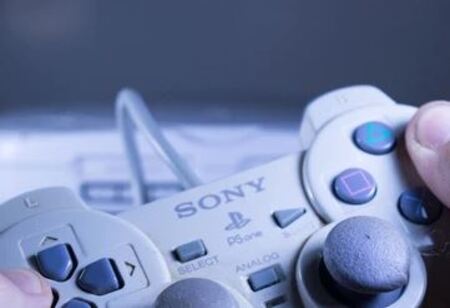
CES 1991: Nintendo's Treason Made Sony Rule With PlayStation's Success


For three long decades, Sony has not only been leading in that race but has constantly held the crown with fighting spirit and tirelessly producing high-grade games. Rivals on the other hand, like Microsoft and Sega have been leaving and rejoining the competition.
Raising a toast to the birth of the PlayStation’s very first, the PS1, sings a tale of treachery and retaliation. Early in 1991, when video games were still relatively new and technological development was at an all-time high with rapid invention, Nintendo broke ties with Sony. Sony struck back by creating an iconic brand, PlayStation, that changed the whole course of the gaming industry.
CES 1991 Controversy
Sony and Nitendo had been involved in this project, named the Nintendo PlayStation, at the time, since 1989, which was. Sony announced this collaboration to develop a Super NES version that included a built-in CD drive, at the Consumer Electronics Show in Chicago on May 28, 1991. As excitement grew around CD-ROM, Sony was about to become the highlight of the show.
From Sony's side Ken Kutaragi, a businessman from its research and development department, came to the show to showcase its new joint venture. Meanwhile, Sony was also displaying its system prototypes. However, Nintendo's treachery was exposed in a surprise press conference just one day into the event.
How Sony and Nintendo Formed Alliance
Kutaragi once happened upon his daughter's NES, whose console's audio quality was rather not up to the mark. Nintendo approached him to create a sound chip for the system. Although he was thrilled with the offer, Sony’s hire-ups found this as a hard pill to swallow. Kutaragi was aware that this decision would cost him his job, yet, he took a leap of faith and started to work on the chip.
Fortunately, Sony President Norio Ogha and his friend still believed in him and supported his efforts. He encouraged him to work on his new project, while promising him his job. As a result, the greatest sound chip of its time was created, and a new collaboration between Sony and Nintendo began.
Nitendo Also Needed a Solution
Nintendo was ardently in search of a solution as video games outgrew cartridges in the early 1990s. Sony had been experienced in testing with its heavy-file-running CD-ROM technology. Nitendo decided to collaborate with Sony to create a console that has a CD drive that works well.
Nintendo had Second Thoughts
On second thought, Nintendo’s president Hiroshi Yamauchi began to critically view Sony's motives, believing that the company was using their collaboration to establish a presence in the profitable video game market.
It foresaw that Sony might profit from CD game sold with its SNES add-on, which went against its strategy of having all the Famicom software to itself. Additionally, it was also aware that Sony had previously revealed plans about relying on its music and film division to develop a software lineup that went far beyond primitive cartridge games.
Yamauchi realized that he could be developing a rival rather than a partner. The fact that Sony was already the only provider of the SNES audio chip and had made programmers utilize a costly Sony development tool to use it correctly fed well to Yamauchi’s doubts.
Nintendo Cuts Ties With Sony
Finally at CES 1991, Nintendo revealed that it had inked a contract with Sony's rival for a comparable SNES disc add-on, just one day after Sony had announced its SNES agreement.
Sony Was Furious and Kept that Fighting Spirit Burning
Enraged by the ruthless betrayal, and at Kutaragi's request, the CEO formed Sony Computer Entertainment, assigning Kutaragi to lead it. For years, Sony worked on many game consoles, but only tasted success with the exception of the PlayStation, which turned into Nintendo's worst nightmare.
But the Tables Had Turned
Sony made a wise decision by making it easy for developers to create games for their console, but even PlayStation had some challenges at first because no one was aware of its potential. The company simplified the development process.
Sony’s PS1, or PlayStation, in 1994 was a huge hit.
Since CD-ROMs created opportunities that were not possible in the cartridge market, it was not only more powerful than nearly every other console available, but it was also less expensive to make.
With its better 3D visuals, the PlayStation emerged as the go-to platform for developers looking to advance technology. Nintendo, meanwhile, jumped right into reality after their agreement with Philips went so badly that they even abandoned the plan to enter the CD-ROM market, keeping their cartridges instead.
The gamble that Sony took paid off brilliantly. With more than 100 million devices sold globally, the PlayStation became the industry leader in gaming by fusing developer-friendly regulations with technological innovation. A series of events that made Sony one of the most powerful companies in the video game business were unintentionally started by Nintendo's betrayal.
In retrospect, Nintendo made a monumental strategic error when it decided to sever its connections with Sony. Nintendo was still a dominant force, but it had unintentionally produced its most formidable rival, bringing in a new era of gaming that was characterized by the popularity of the PlayStation.

